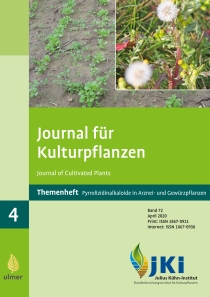The sector has constructively faced the challenge of pyrrolizidine alkaloids in medicinal and aromatic plants
DOI:
https://doi.org/10.5073/JfK.2020.04.06Keywords:
contaminants, pyrrolizidine alkaloids, risk reduction, weed controlAbstract
As soon as pyrrolizidine alkaloids (PA) had been detected in herbal teas, spices and medicinal plants, all players of the sector committed themselves to reduce the risk of PA contamination for their products. Based on risk assessments, likely contamination pathways from PA containing weeds into the herbal products were identified. In numerous events farmers and herbs processing companies informed themselves about PA sources and measures to reduce the risk of contamination. Research projects were run or started to evaluate the PA potential of weeds, to improve weed control and to eliminate PA from herbal material. Farmers, processers and researchers collaborate closely to achieve these goals. Professional bodies like the German Committee on Medicinal and Aromatic Plants are platforms for discussion of recent PA information and for initiation of further activities along the process chain. The efforts of all players of the sector already led to reduced PA concentrations in herbal products. However, a perfect solution for zero contamination will not come true. Upcoming toxicity data will allow to individually evaluate contaminations with different PA substances.








